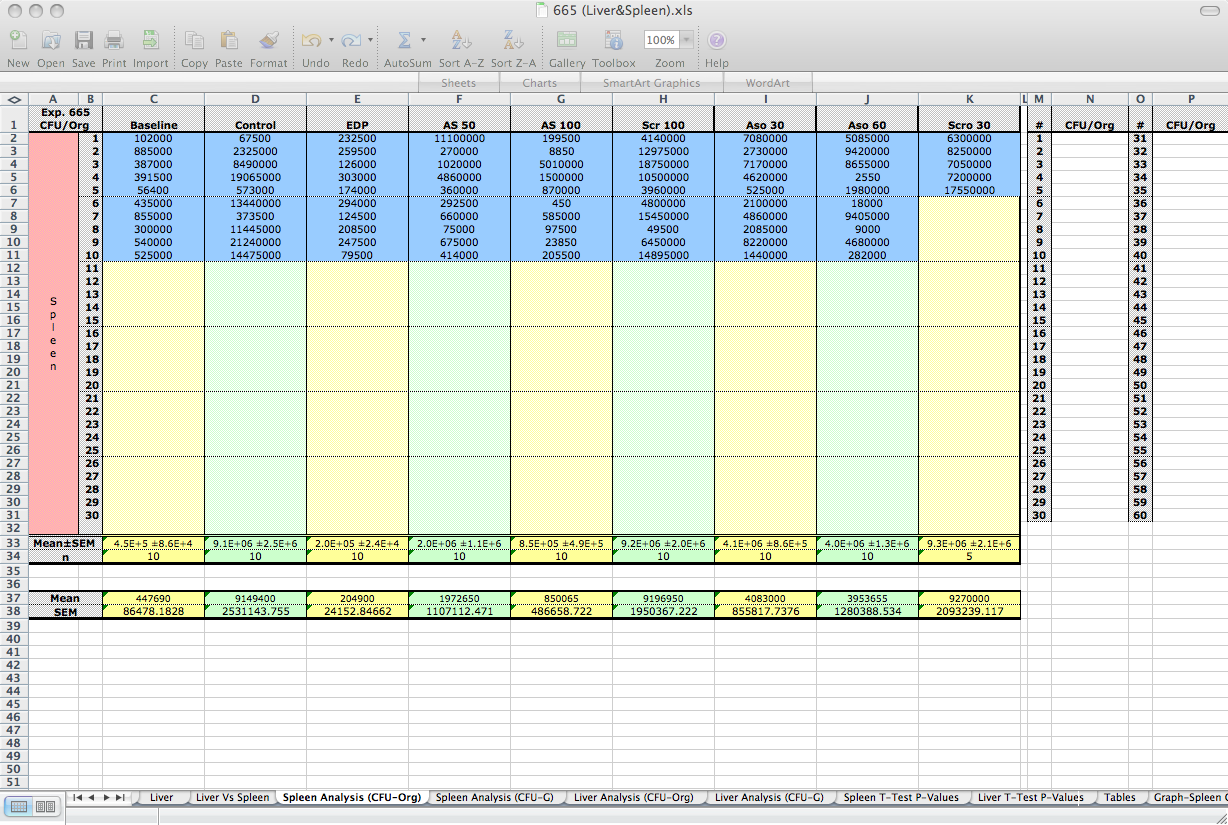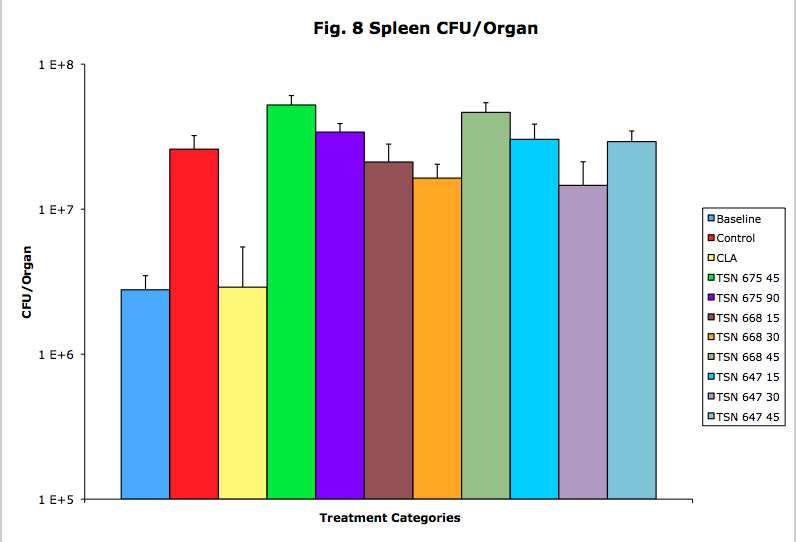When I was going through my Twitter feed this morning, i happened across this: Extinction & invasive species are PART of nature. Things change. Why r we obsessed with freezing current ecology? http://tinyurl.com/lo7k27 and this: “Survival of the Fittest” means that, unfortunately, that some of our favorites will be pushed out. It’s not “Survival of the Cutest.” and this: Every species u see now pushed another species out. And those pushed out the ones before them. No such thing as “original” or “native.”
I responded with some rather insultingly rude comments @scottsigler Natural invasions occur at a fraction of the rate of human caused invasions. Its not freezing ecology, its protecting diversity and @scottsigler You seriously need to bone up on your populations genetics. The shit you said was stupid. As is laughably incorrect. Its rather hypocritical of me to call someone else out for saying talking shit without backing up my own. Invasive species occur all over the planet, in all manner of ecosystems. My experience, as well as the article in question, is mainly marine, so most of my examples will be as well.
The problem is not so much with the assertion that natural invasions don’t happen, or that extinction isn’t a part of life. Its with the complete disregard for the very real damage that invasions do to local and regional ecologies and the disregard for the differences in the rate between natural invasions and those caused by human activity. I’m going to consider the kelp species mentioned in the article. Assuming that no one reading this has ever seen a giant kelp species in the flesh or know anything about their life cycle, it goes something like this. Kelp, as an algae, reproduces via sporulation. Unlike plants, which have tissues analogous to animals, all kelp cells are effectively the same and all produce spores. I have personally forced kelp to sporulate in the lab and collected from seven blades, enough spores to change the consistency of 1L of seawater into something more like syrup. That’s a concentration high enough that it needs to go through several dilutions in order to be at a low enough concentration to be useful for the experiment we were conducting, about 1E12 spores/mL. If I can generate that many spores from seven blades in 20 minutes, imagine how many spores an entire kelp forest releases during a season.

Kelp spores
Sand dollar larvae. Most broadcast spawners have larvae about this size.
Now consider how tiny kelp spores are, at the micrometer scale. In order for a Japanese kelp to invade California, especially to the point where it can out-compete native species, these spores must cross the Pacific Ocean by riding natural currents, which run through the Arctic Circle and then down the California coast with the cold California current. Any such invasion would likely start north and work its way south, with the currents. Now consider, instead of some space spores managing to survive that trip, a container ship sitting in a Japanese port. Well, it doesn’t just sit there. As containers are being loaded, the ship is loading its ballast tanks with a few hundred tons of coastal seawater, which is filled with not only kelp spores, but a host of other algae species, fish, crab, mollusk and echinoderm larvae. This ship will then cross the Pacific in the best time possible. These ships are required by US maritime law to stop mid-ocean and cycle their ballast tanks, but rarely do, as the fines for failure to comply with the law are less than the cost of stopping. Thus, when the ship reaches port its ballast tanks will be full of all sorts of foreign beasties who are ready and often at the perfect stage in their life cycle to colonize.
This can be problematic for local ecosystems, especially when low level members of the food chain get out-competed by invaders. Not only can food stocks radically change, but things like seagrass height can prevent birds from nesting, an invading clam that reaches the adult stage a week before native species and consumes resources, a marauding crab that rampages through the tidal zone, and on and on. I can also safely assume that no one reading this has ever inspected a cargo ship’s ballast tanks, or even boarded or been close to one. You really have to personally experience it to internalize the scale.
Besides the havoc that such invaders can wreak on native ecosystems, but they can cause massive economic devastation as well. Fisheries can be wiped out, mussels can clog outflow pipes of power plants, clams can bore into mudflats and massively increase erosion, threatening all sorts of human communities and commercial facilities.
As for the Survival of the Fittest comment, that’s social Darwinist bullshit. That’s not a scientific concept or something that’s ever brought up in scientific literature. Natural selection is cruel and impartial, but works on populations in entire ecosystems. It also works at a particular rate, usually called evolutionary time (like how geological processes function at geological time). That’s kind of why they’re called ecosystems, since they are functional systems. If you start introducing massive disruptions into any system, it will collapse. That’s not natural selection, any more than climate change is a natural process. The fact is that there was no massive invasive species problem before the advent of fast trans-oceanic shipping. The only major cause of species invasion before that was deliberate human introductions. Unless anyone thinks that rabbits just happened to pop up out of nowhere in the Australian outback. Or that most of the lust Hawaiian vegetation that we all like is invasive, and happened to show up after European colonists showed up (which was after Polynesian colonists showed up). I could go on, but the fact is that natural invasions are so rare and mild that they can be absorbed by the ecosystem with minimal disruption.
Next, there’s this comment: Every species u see now pushed another species out. And those pushed out the ones before them. No such thing as “original” or “native.”Wrong. There are plenty of examples of empty niches being filled in by opportunistic species. Classic example: early mammals didn’t exactly wipe out the dinosaurs by themselves, now did they? I don’t know what Scott meant by original, since that’s not a word we use in the context that he was using. There is, however, such a thing as a native species. What constitutes a native species is even defined scientifically. All one has to do is look it up.
@pcharing there is no “permanently disasterous” in nature. One species’ apocolypse is another’s gateway to dominance of the open niche.I think the dinosaurs and trilobites would disagree with you. An apocalypse tends to effect more than one species at a time, and extinction, at least in nature, doesn’t just happen. Again, we’re dealing with systems with lots and lots of interdependencies. For example, it would really suck for us if phytoplankton stopped fixing nitrogen and the atmosphere turned into poison.
@niltiac afraid that isn’t true, as proven by the FIVE mass extinctions in Earth’s history. 5, yet life flourishes, including all u see now.Life that tended to be quite dissimilar to that which preceded it. Sure, it all has DNA, but the first life forms in this planet (who dominated far longer than any eukaryote) thrived in what was an alien planet with a toxic atmosphere. Its lucky for us that they fouled their nest by filling the atmosphere with a toxic, caustic gas that eventually drove them off the face of the Earth. Sounds familiar, yes? Except oxygen gas, at atmospheric pressure, isn’t toxic to life forms like us. What makes you think that we could survive the next mass extinction? Maybe we should be less blasé about it.
@j0ni “balance” is a myth. Extinction is the rule. There was no balance before us, there us none now. Equilibriums are temporary in nature.Yes, there is no such thing as a perfect equilibrium in nature, and yes, its a model. Yes, given enough time, everything is temporary, even the universe. But, statistically, its an accurate model that predicts how ecosystems function. If you’re going to dismiss an accepted biological model with decades of support, please offer some evidence to back up your claims. Creationism is a myth, equilibrium is science. The difference? One is supported by observation, correct predictions, and cold, hard math, the other, not so much.
@CJWellman Most “native” Galapaos species are “invasive” from long B4 man arrived. Native state is barren. When did “native state” start?Its hardly invasive to colonize a barren rock with lots of empty niches. If you don’t think there’s a difference, go ask an indigenous person, anywhere in the world, what he thinks of being colonized, then go ask a Martian what he thinks of us sending all those probes and planning to colonize Mars. Oh, wait, there’s no life on Mars. There’s no indigenous life to get pushed out. When did the native state start? When life started growing there are formed an ecosystem. Barren is the state of there being no life, no ecosystem. Native state requires life.
@j0ni “Fatalism?” Please. Life goes on. Just not this snapshot of life. Good luck stopping time, nature and evolution.Look at Mars. The conditions for life existed there once, but no longer. Think that can’t happen here? Besides, there’s no such thing as a snapshot of life. Life is always in motion, always evolving, us included.
@DomonicMongello so if species arrives on Galapagos from wind or ocean currents, that’s okay, but on ship (from man), that’s not?Again, its a matter of scale and time. You can’t honestly compare wind-borne seeds landing on islands to the Dutch bringing coffee to Java. If you really don’t understand the difference between the mechanisms, then there’s not much I can say to convince you otherwise.
@j0ni show me one example of equilibrium, “balance,” that did not replace a previous state of “balance.” Ergo, balance is temporary at best.
@j0ni no straw man. U say “balance” is observable phenomenon. I ask for permanent example in nature of your statement. Do u have one?There’s no such thing as a permanent ecosystem. Anyone who would suggest such a thing is ignorant of how they work. However, that doesn’t mean that equilibrium doesn’t exist, or that ecosystems can’t persist for periods of time longer than the existence of human civilization.
All ecosystems function in a state of equilibrium, or else they collapse, extinctions occur, opportunists move in, and a new equilibrium is formed. Equilibrium in environmental biology is not some biblical harmony. All it means is that conditions are stable enough for biological niches to be filled, allowing the native organisms to go through their life cycles. Every single organism depends on a stable and functional ecosystem in equilibrium to thrive. That includes us. We require far more equilibrium and stability than most species. Our food supply is dangerously homogenous, depending on only a few species for our staples. Imagine a virus that attacks grain spreading around the planet, wiping out wheat, rice and corn. Think about just how tenuous our food supply really is, especially when you also consider the havoc that we’re wreaking on the atmosphere, the water supply, the soil. Look at the food you have in your house, think about where it came from, and then tell me, with a straight face, that equilibrium isn’t real or that its doesn’t matter.
Scott challenged me to point out what was laughably incorrect. At the very least, the vast difference between natural aquatic invasions and ballast tank discharge fits the bill. I could stand to be more polite in the future, but I can’t make any promises.




